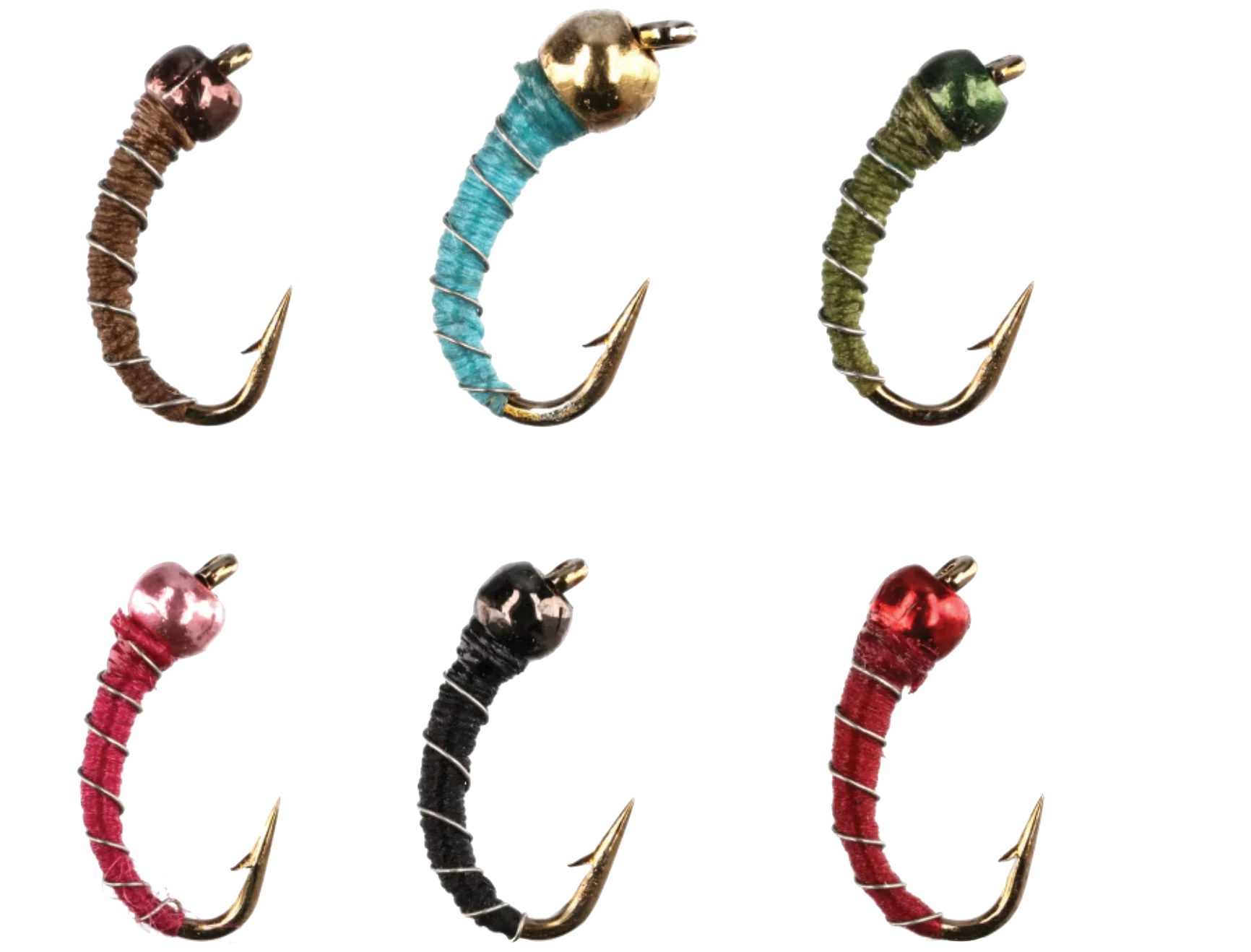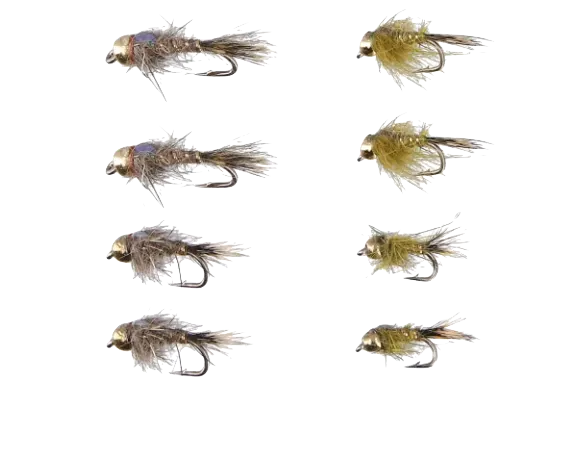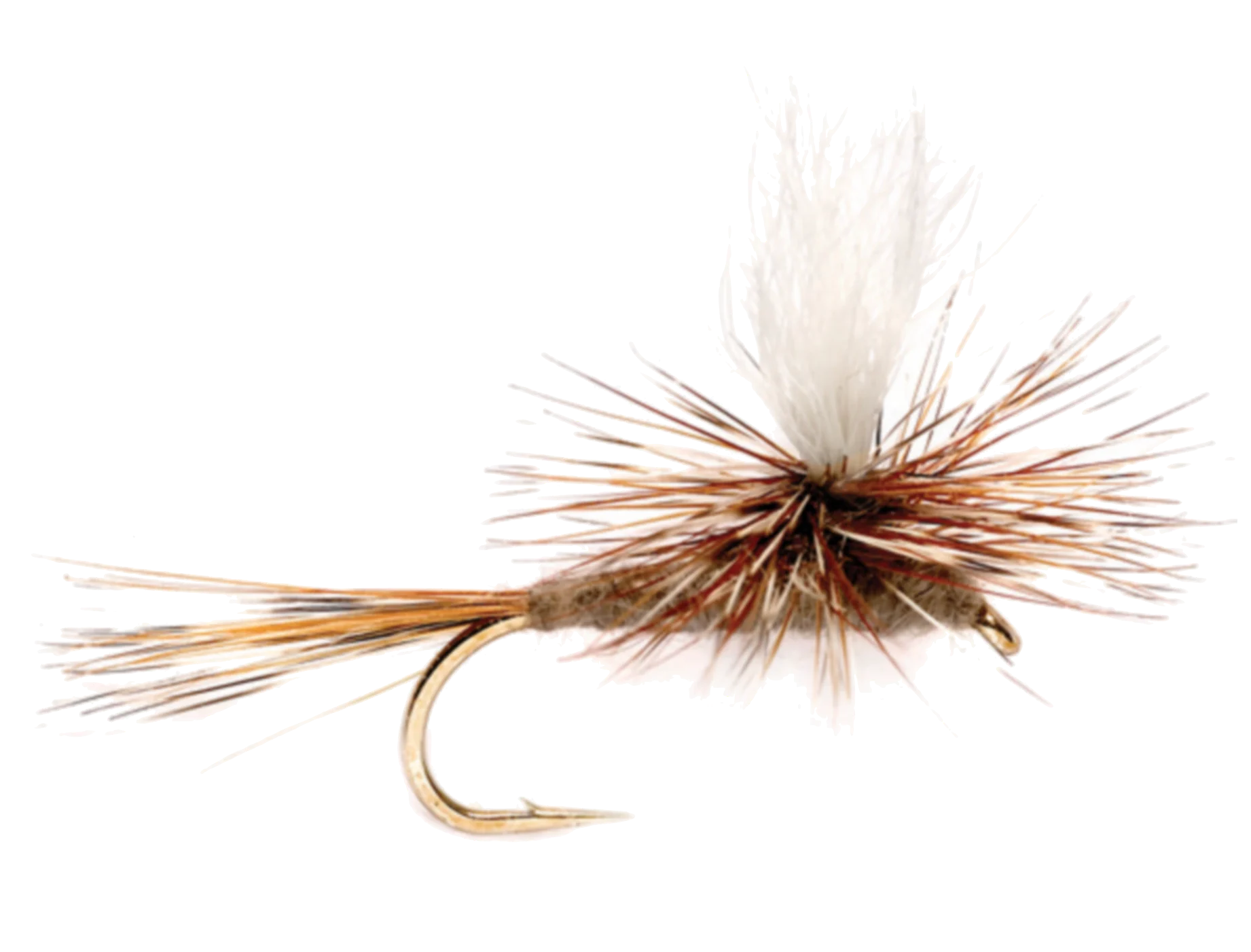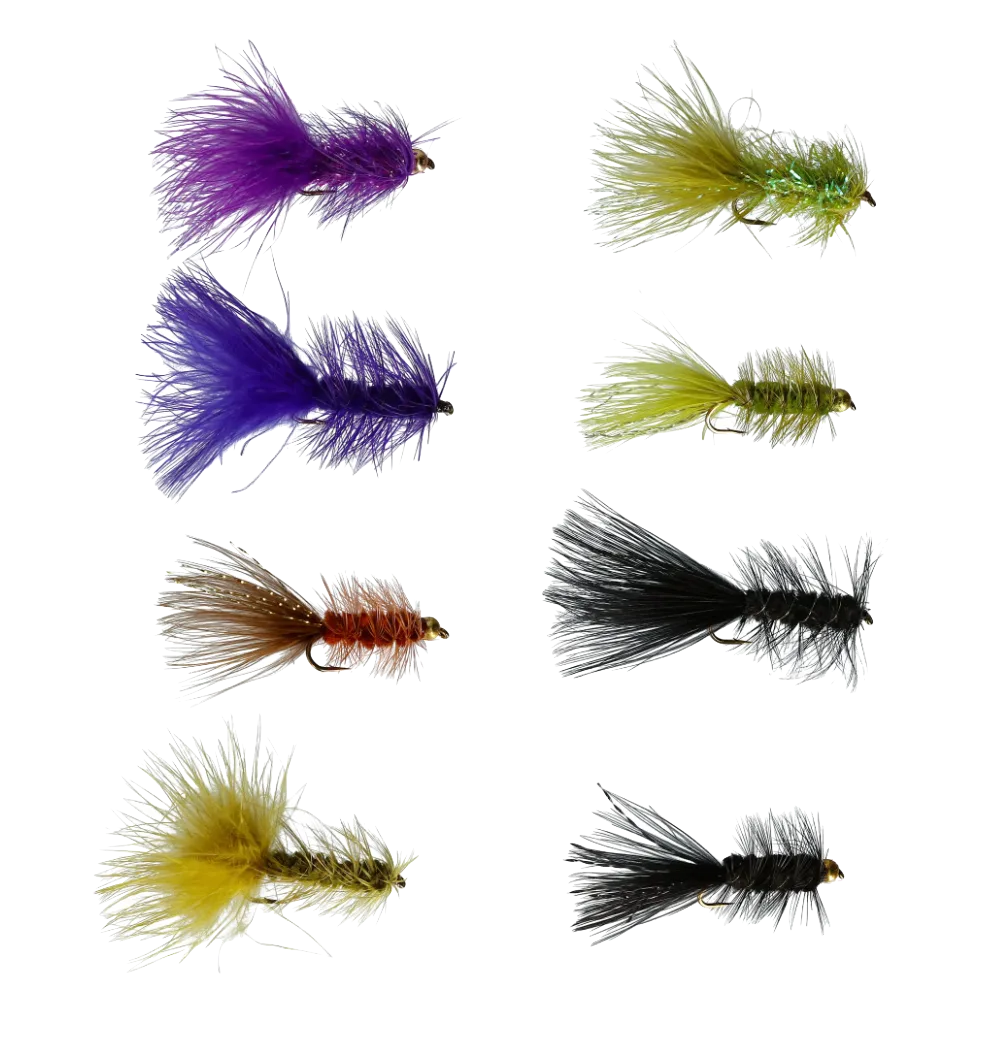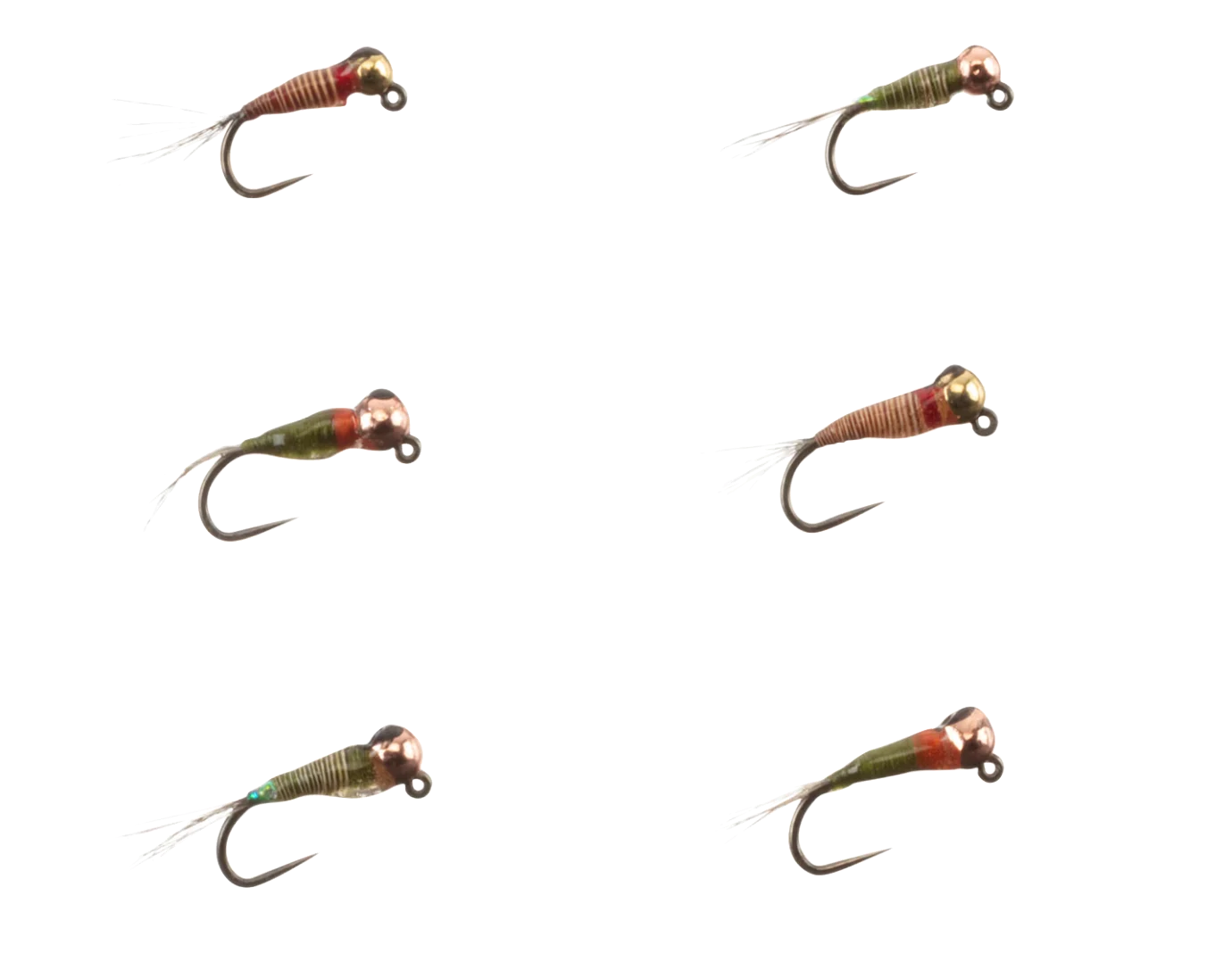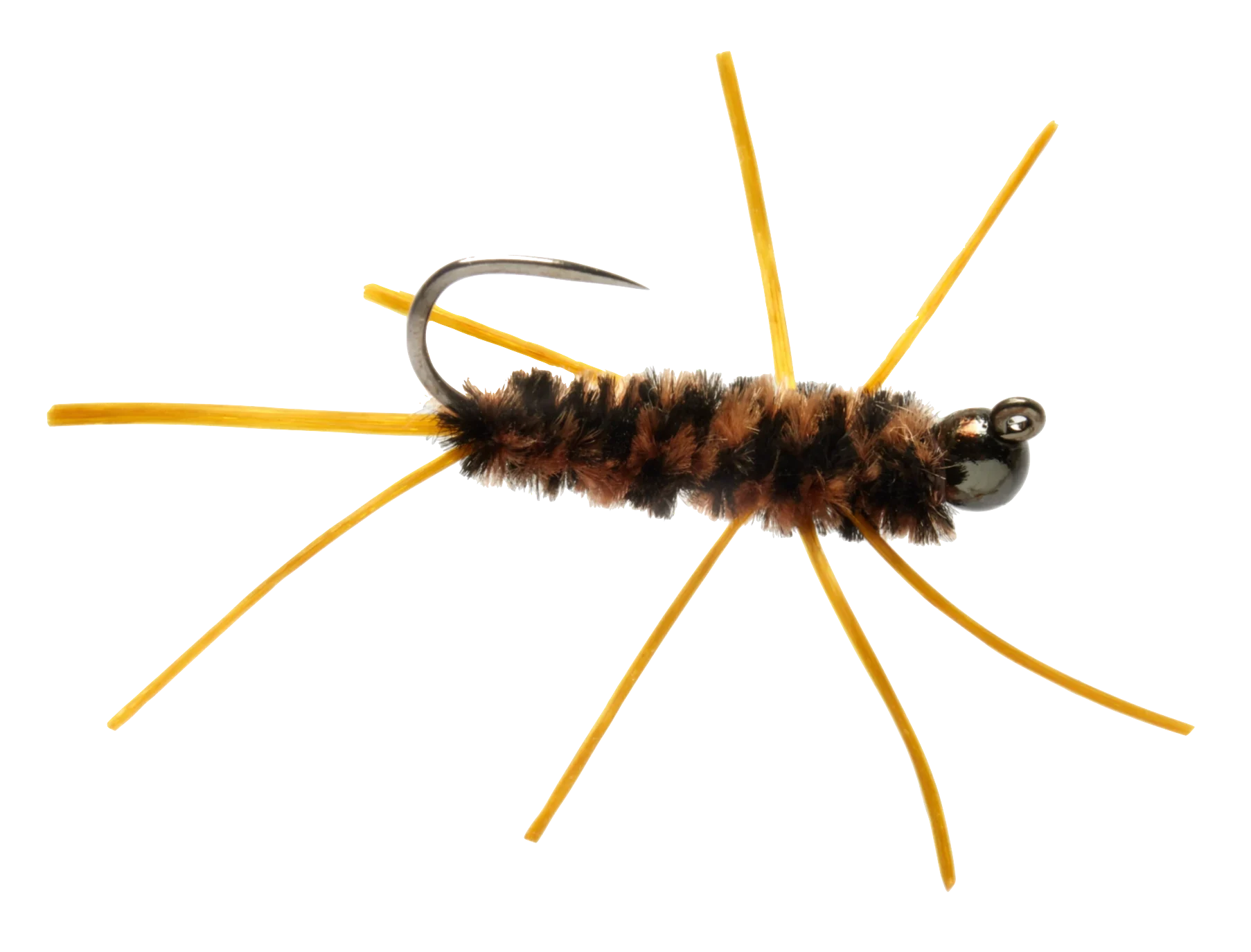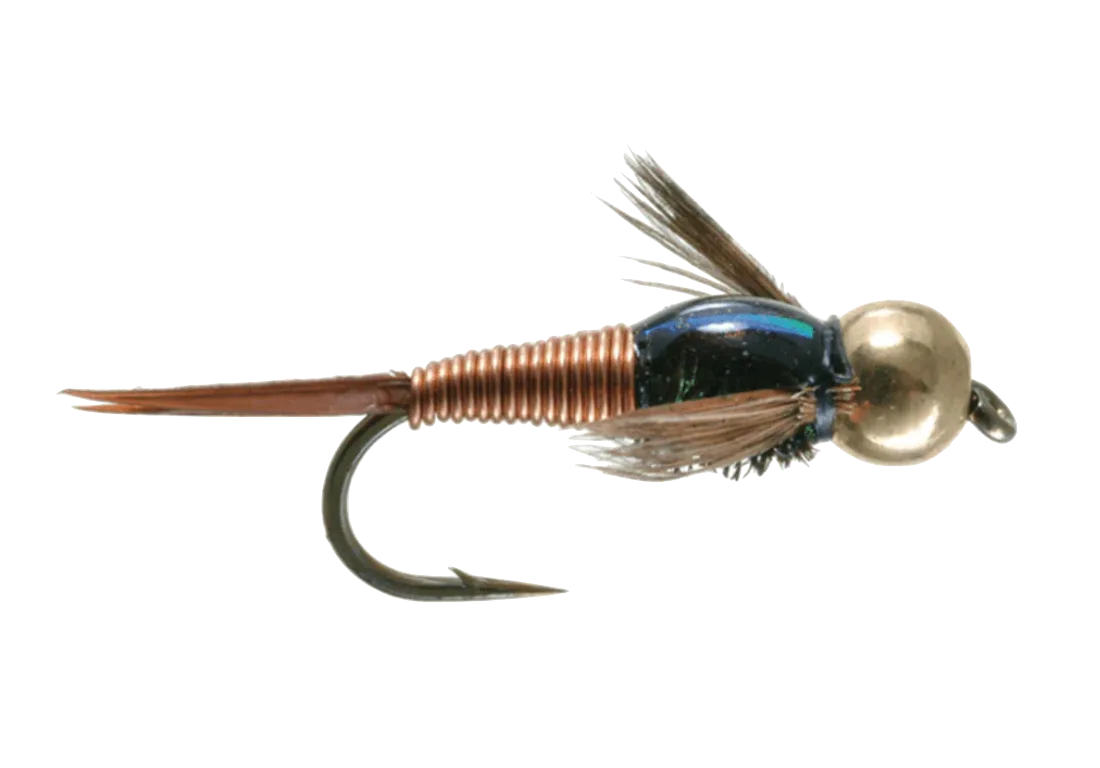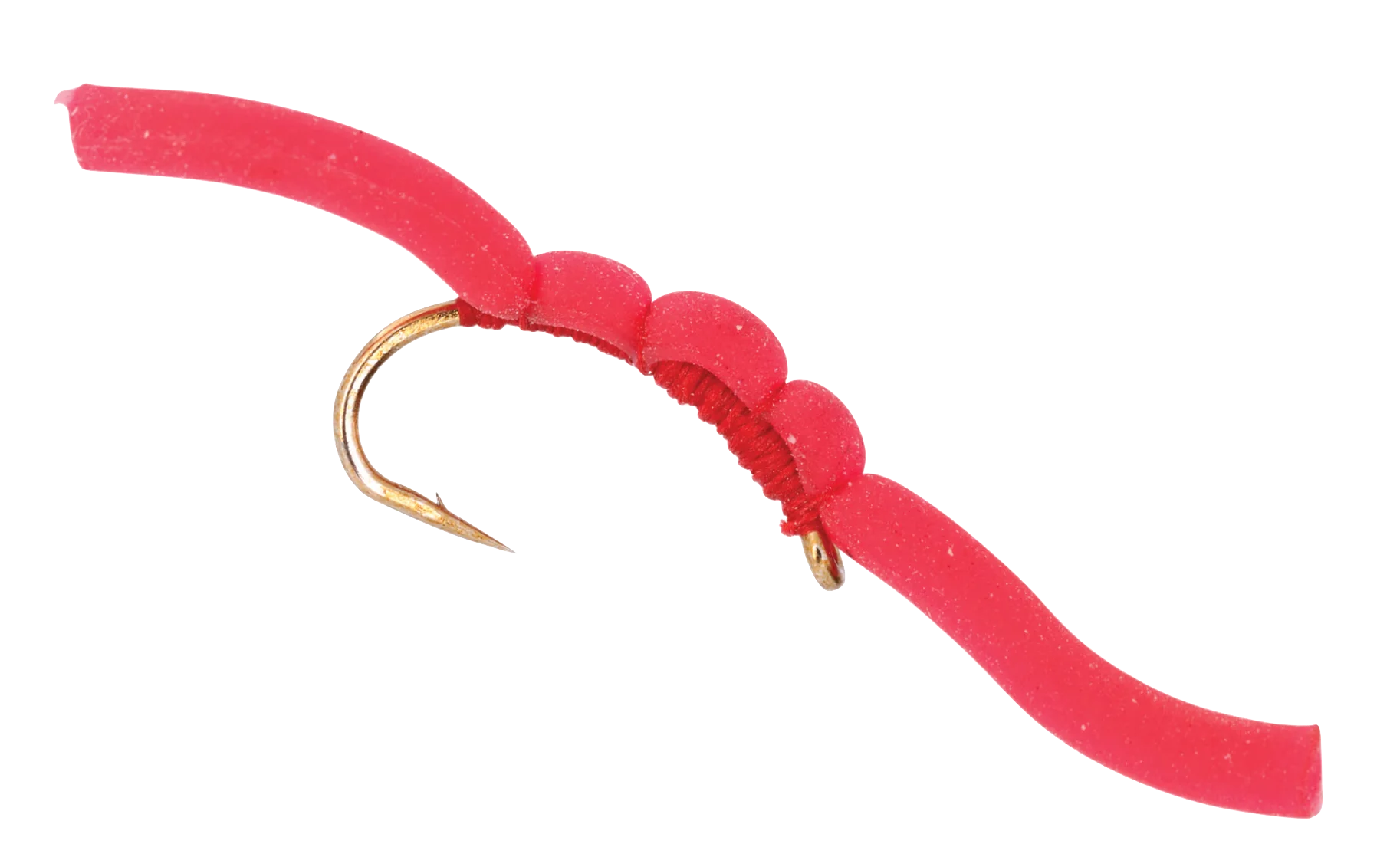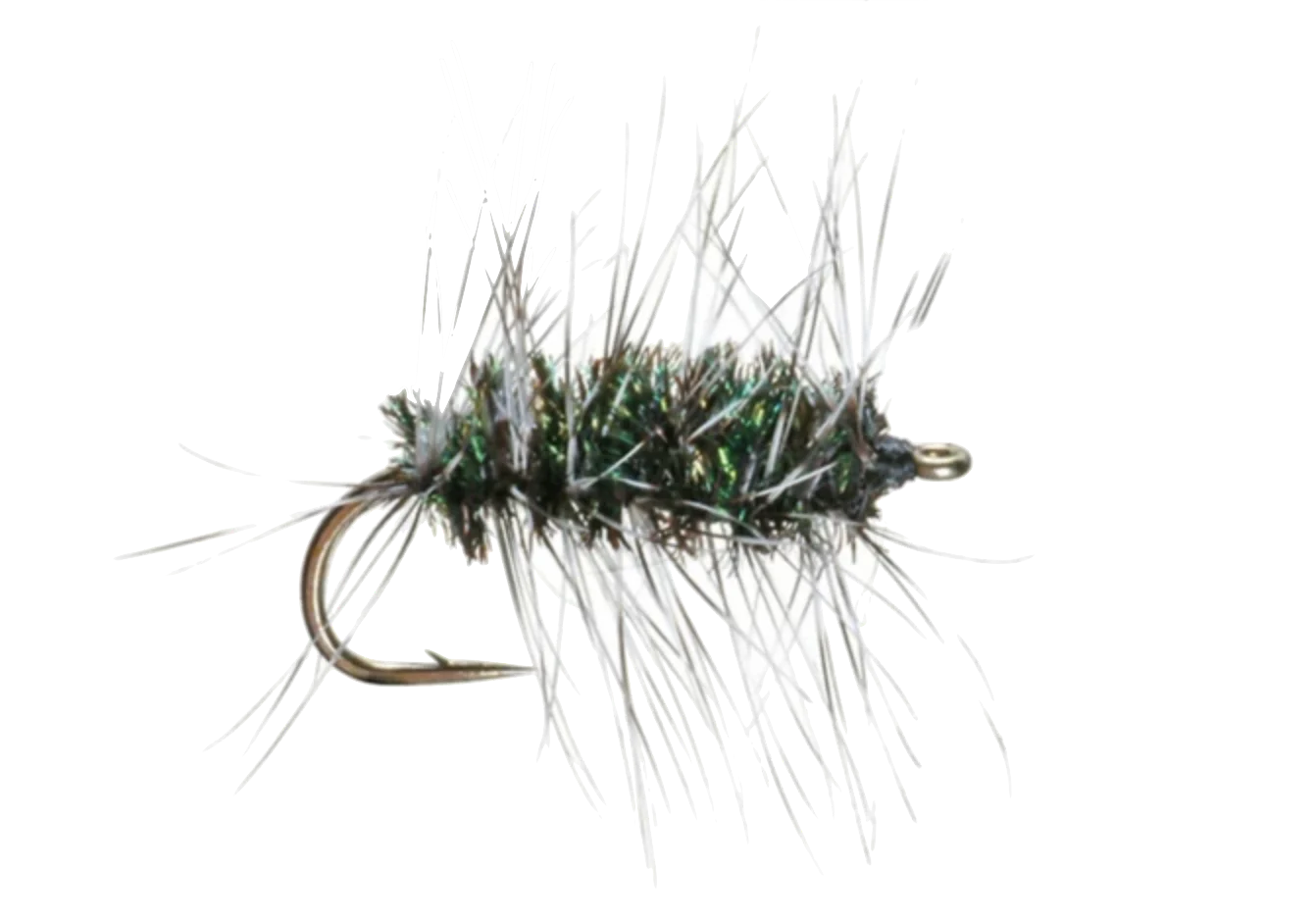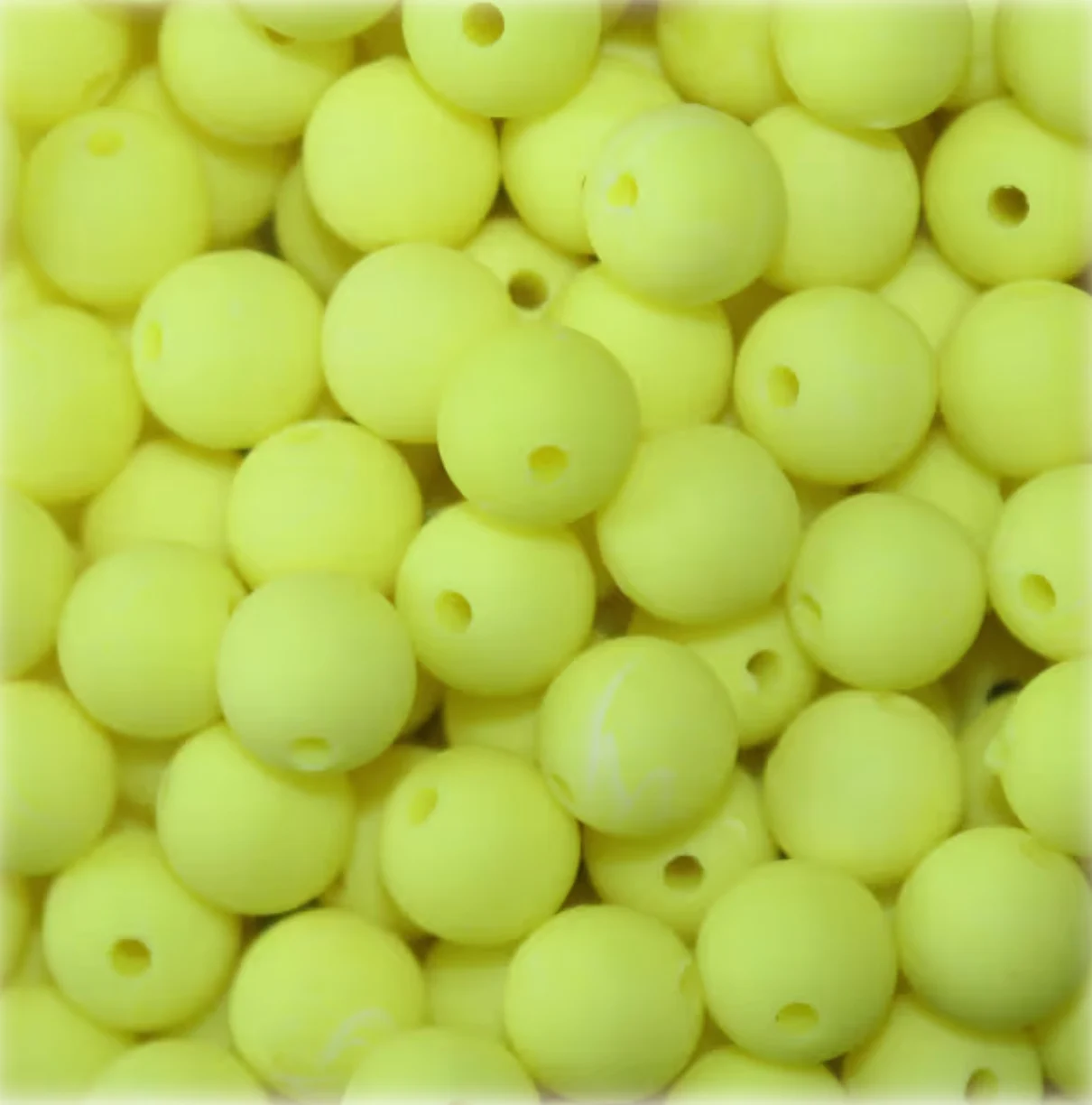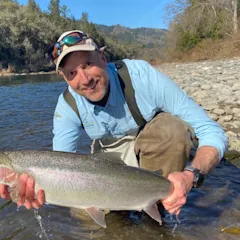While some states still have formal trout openers, most allow year-round fishing so anglers can get out there even during the depths of winter. Although trout need cold water to survive, when water temps drop toward the freezing mark, a trout’s metabolism grinds to a near halt. And, because the fish aren’t burning many calories, they don’t need to feed much.
Still, wintertime trout do need to eat, and that means you can catch them if you fish in the right places with the right flies. Tailwaters below dams and streams with significant spring influences tend to fish the best in the winter because, relatively speaking, they are not as cold as freestone streams. But even freestone streams can produce great winter fishing. Here are 10 flies that every wintertime trout angler needs to carry in their box.
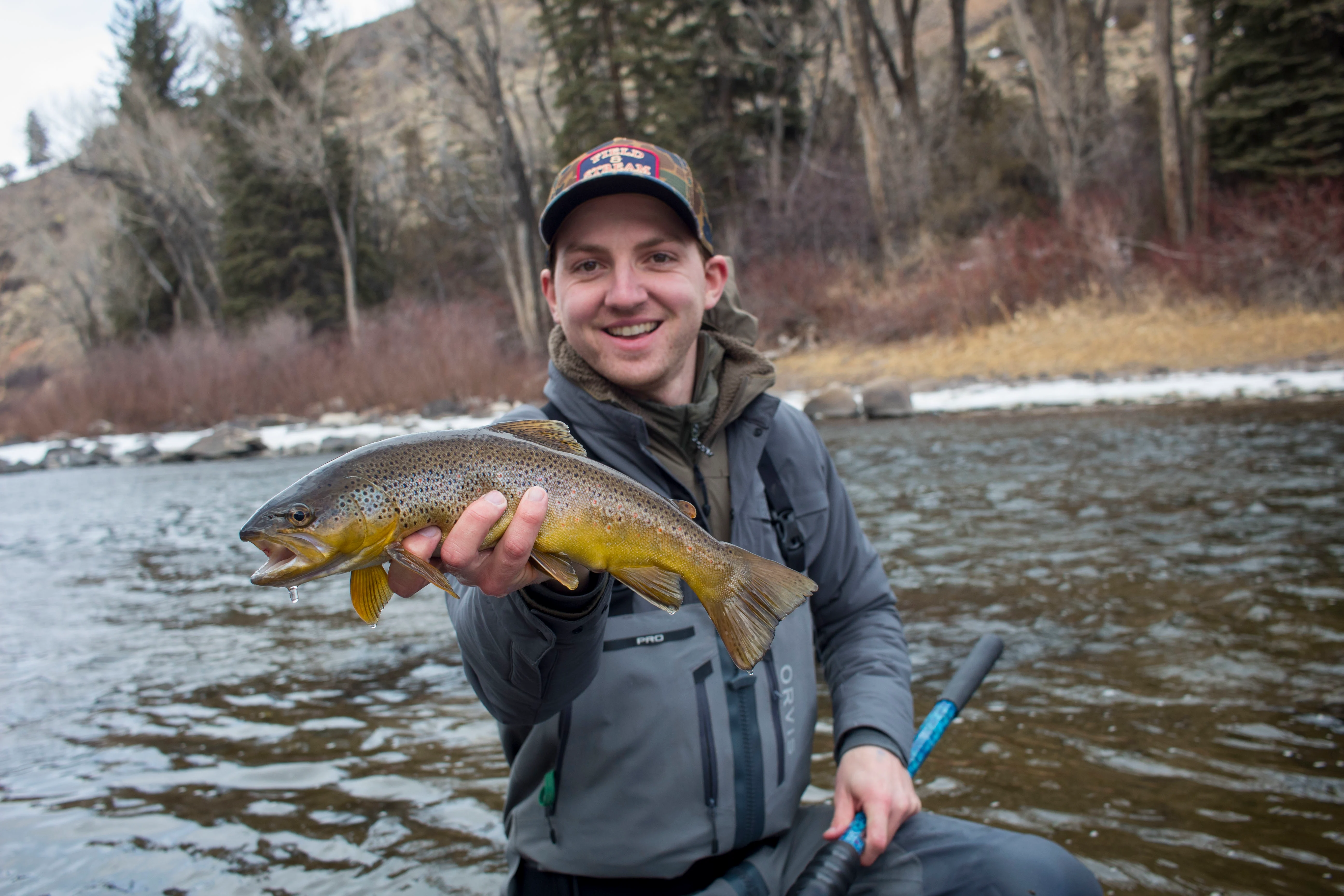
Zebra Midge
Midges are small aquatic insects that account for a large portion of a trout’s diet in many waters, especially spring creeks, tailwaters, and stillwaters. They are an important food source during the winter when other aquatic insects like mayflies are less available. Midges provide the most consistent winter hatches of any aquatic insect.
The Zebra Midge is a super simple and incredibly versatile nymph pattern that can be fished a variety of ways, be it a tungsten-beaded version bounced along the bottom or a glass bead version fished in the surface film. Black, red, and olive are top colors, but don’t be afraid to try purple or blue. Usually tied in sizes 18-22, it’s best fished as part of a multi-fly rig, either with another larger nymph (or two) or under a dry fly.
Hare’s Ear Nymph
The Hare’s Ear is a classic sub-surface pattern. The dubbing—traditionally fine fur from a rabbit’s ear or face—gives the fly a buggy look and feel. It doesn’t mimic any aquatic insect exactly, but it looks tasty. While a Hare’s Ear nymph can be tied—and be effective—in various colors, the standard drab tan is tough to beat. Gold ribbing and an optional bead head add flash. Usually fished in sizes 12-16.
Parachute Adams
The days of prolific hatches are still a few months away, but it’s possible to encounter surface action in the winter. The primary hatches will be midges and beatis mayflies, which most of us know as blue-winged olives. A Parachute Adams is a simple surface pattern that can do a good job of imitating a BWO (sizes 16-18) and, in smaller sizes (18-20), can pass for a midge. Even in smaller sizes, the white post makes it relatively easy to see on the surface. Doused liberally with floatant, even a small Parachute Adams can serve as a point fly on a dry-dropper rig.
Woolly Bugger
As lethargic as winter trout can be, sometimes they can’t resist a big, meaty mouthful, even if they have to move a bit for the meal. The classic Woolly Bugger is a great winter fly because it can be fished in several different ways. The most effective presentation in extremely cold water is to fish it as a nymph on a dead drift, either under an indicator or with just subtle bounces when tightlining. If trout are active, fish a Woolly Bugger as a streamer, either with a strip-pause retrieve or swinging. Black, olive, and white are the top colors. In the winter, lean toward smaller sizes (8-12) and, if fishing as a nymph, add a smaller nymph as a dropper.
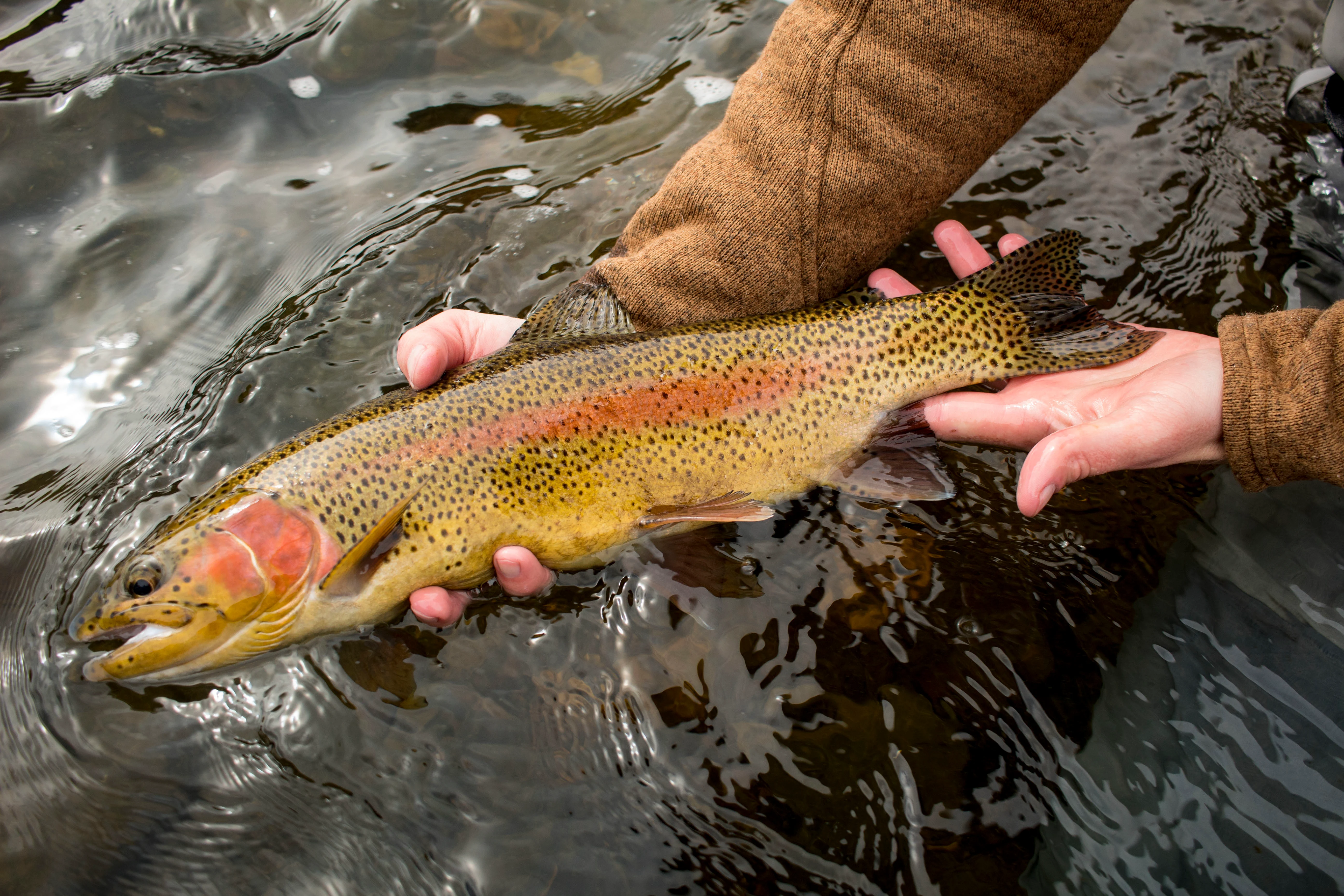
Perdigon Nymph
This slim-bodied nymph is most often associated with Euro and tightline nymphing, and for good reason. It’s a super fast sinker—thanks to its tungsten bead head—that gets into the strike zone in an instant. While the Perdigon excels in tightline presentations, there’s nothing wrong with using a fast-sinking fly in a dry-dropper rig or under an indicator.
Typically tied in sizes 14-18, Perdigons can work well as both a midge imitation or a general search pattern. It works best when fished in a multi-nymph rig, either with another Euro-style nymph or a more impressionistic pattern like a Hare’s Ear or Pat’s Rubberlegs.
Pat’s Rubberlegs
A Pat’s Rubberlegs is nothing more than some chenille wrapped on a hook with some rubber legs hanging off. But this simple fly is a killer, not only as a stonefly imitation but as an impressionistic search pattern. Two-tone versions are popular, but the Rubberlegs is also effective in single colors, usually black or brown. A bead head can increase the sink rate and add some flash. It excels as a point fly in a double nymph rig.
Copper John
Technically a mayfly nymph, the Copper John is an excellent all-around underwater offering that can be representative of many aquatic bugs, including stoneflies and even midges. With a copper wire body, a bead head, and sometimes even added wire, it’s a fast sinker and excels as a point fly when tightlining. Don’t be afraid to double up on this pattern, trying two different colors to see if one out-produces the other.
Squirmy Wormy
If rubber worms can work so well for bass fishing, why can't they do the same for trout fishing? The Squirmy Worm can be tied with an added bead, extra weight, or even a little added flash. But at its core, it’s a rubber worm. Fish in tandem with a regular nymph, and don’t be surprised if the worm out-produces the nymph by a wide margin, especially when the water is a little off-colored.
Griffith’s Gnat
The Griffith’s Gnat is an ingeniously simple dry fly midge imitation. Tied with grizzly hackle palmered over a peacock herl body, it can mimic a single midge in smaller sizes or a cluster of midges in larger sizes. It floats great, and the peacock gives it a little natural flash. Because smaller sizes can be tough to see, consider fishing it on a short leader off the back of a larger, more visible dry fly.
Trout Beads
Technically, a hard bead is not a fly. But, neither is a Squirmy Wormy or plenty of other things we throw with fly rods. Because trout are so naturally tuned into eggs, beads (and other egg imitations) can work throughout the year. They are really great when trout are opportunistically feeding on real eggs, such as behind spawning salmon, suckers, or even other trout. And it just so happens that a good bit of that spawning activity takes place from late winter into early spring. Fish a bead in tandem with a second bead or a traditional nymph and be ready for doubles. Check regulations when fishing fly-only waters to make sure beads are allowed.


